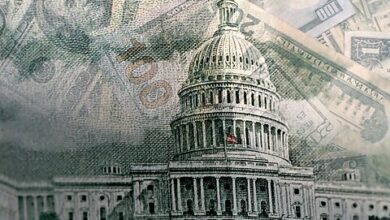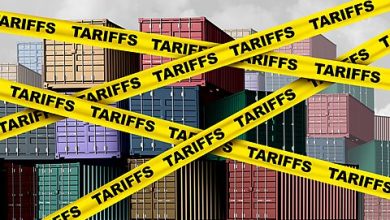Bond Yields Are Global. The Fed Can Undo an Inverted Yield Curve

“Soaring Bond Yields Threaten Fed Goal of a Soft Landing” is the headline of a front‐page Wall Street Journal story by Nick Timiraos, who writes that, “If the recent climb in borrowing costs—along with the accompanying slump in the stock market and [a 5%] stronger dollar—continues, that could meaningfully slow U.S. and global economies over the next year. The swiftness of the recent rise also increases the risk of financial market breakdowns.”
The author proposes a list of hypothetical explanations. But all of them are entirely domestic, as if each country’s financial markets were isolated and disconnected from the internet or telephones. The list of explanations or solutions also leaves the Fed powerless to do anything more than stand still.
As Figure 1 indicates (using OECD data), the market for government bonds is global. Changes in the yields of bonds of major countries are generally synchronized as investor arbitrage seeks the best returns, adjusted for exchange rate risk.
Figure 1:
The black line shows the rise in the UK bond yield from 3.7% in April to about 4.6% in September was just as large as the rise in US yield from 3.5% to 4.4%. That seems inconsistent with the Journal’s purely domestic “likeliest causes” of rising yields being due to “expectations about better U.S. growth and concerns [about] huge federal deficits.”
Yet synchronized global movements in yields are also inconsistent with an alternative theory that US yields rose because of “reduced demand for Treasuries from foreigners.”
The article quotes an economist saying, “It’s perplexing. No fundamental explanation is convincing.” But that is simply because all visible efforts at explanation assumed (1) the US is a closed financial system, and (2) the Federal Reserve had nothing to do with the rise of yield on US and competing foreign bonds.
If limited to those dubious assumptions, then the Fed must now be helpless to alleviate this unexplainable exogenous shock to domestic bond yields.
But the US has had a lot of experience with inverted yield curves — times when the Fed pushed the federal funds rate above the bond yield. The most stubborn postwar experiment with that “higher for longer” strategy was in 2006–2007, just before the Great Recession. Two earlier experiments (using the discount rate rather than fed funds) were in 1920–21 and 1928–29.
Inverted yield curves can easily be fixed in a week or two. Just keep the federal funds rate lower than the 10‐year bond yield and have the FOMC offer sensible “forward guidance” that this policy will continue for the foreseeable future. The Fed probably did flatten the yield curve quickly enough by cutting the funds rate in 2019, but the pandemic lockdowns of March 2020 made that impossible to prove.
Keeping the fed funds rate lower than the US bond yield might not lower worldwide bond yields appreciably (since that also depends on foreign economic conditions and policies). But it would surely ensure a softer landing than we saw in 1970, 1974, 1980, 1981–82, 1991, 2001, or 2007–2009.





